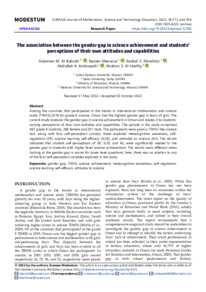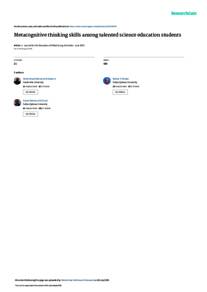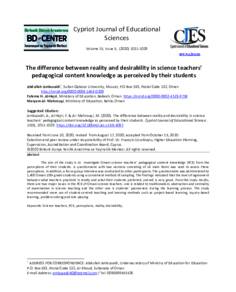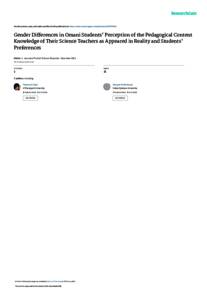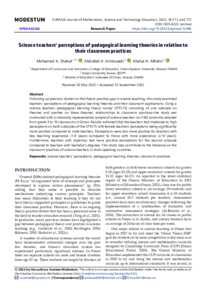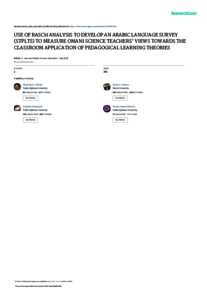Document
The association between the gender gap in science achievement and students’ perceptions of their own attitudes and capabilities.
Identifier
DOI: 10.29333/EJMSTE/12559
Source
Eurasia Journal of Mathematics, Science and Technology Education. v. 18, 11, em2184
Contributors
Mansour, Nasser., Author
Al-Mehrizi, Rashid S., Author
Ambusaidi, Abdullah K., Author
Al-Harthy, Ibrahim S., Author
Country
United Kingdom.
Publisher
Modestum LTD.
Gregorian
2022-01-01
Language
English
English abstract
Among the countries that participated in the trends in international mathematics and science study (TIMSS) 2019 for grade 8 science, Oman had the highest gender gap in favor of girls. The current study explores the gender gap in science achievement in Oman and relates it to students’ varying perceptions of their own attitudes and capabilities. The sample in the study comprised 467 grade 9 students, 266 female and 201 male. The participants were given a TIMSS-like science test, along with four self-perception surveys; these explored metacognitive awareness, selfregulation (SR), science learning self-efficacy (SLSE), and attitudes to science (AS). The results indicated that student self-perceptions of SR, SLSE, and AS, were significantly related to the gender gap in students with higher-level science achievement. The results were different when looking at the gender gap in scores for lower-level questions; here, there was no relation to any of the four self-perception variables explored in the study.
ISSN
1305-8215
Category
Journal articles

